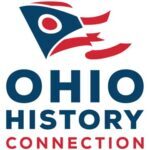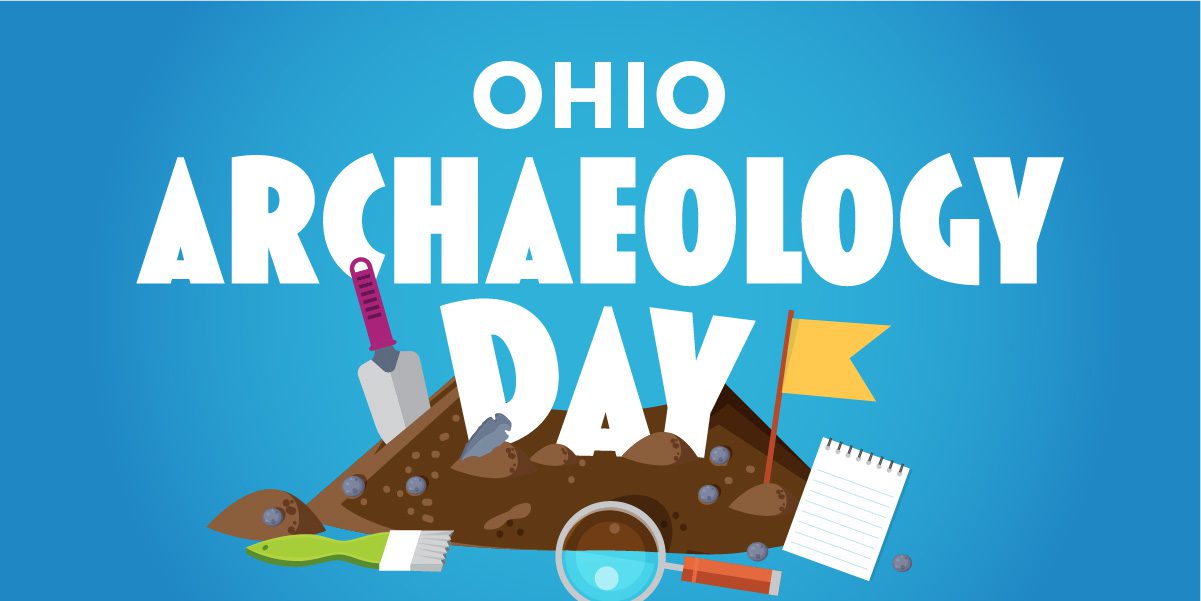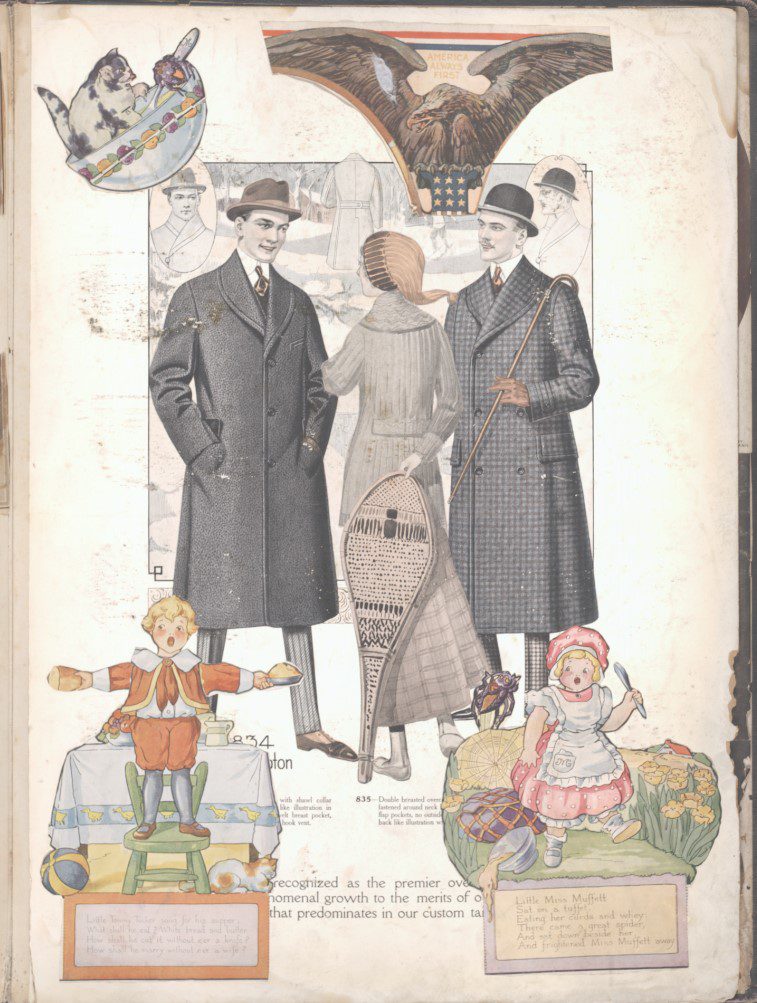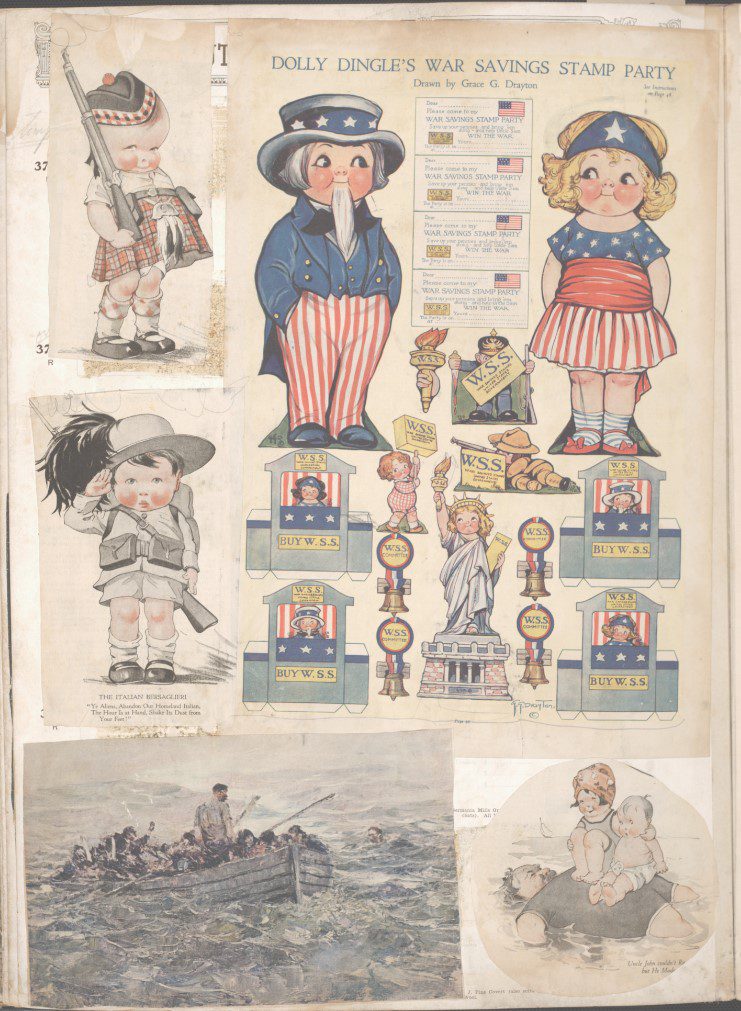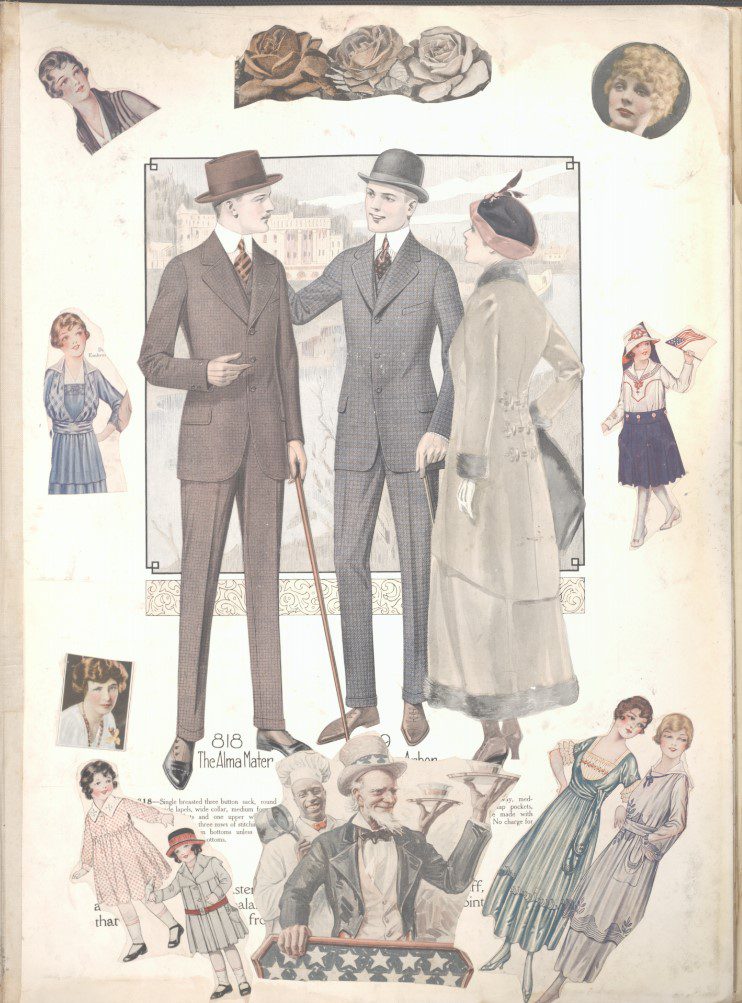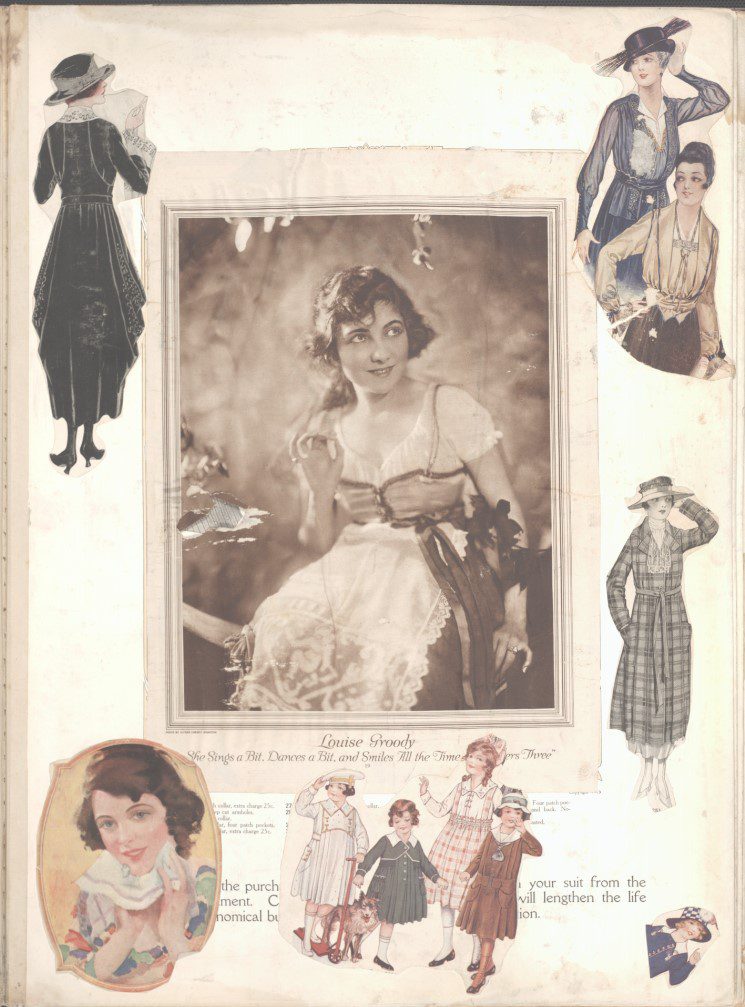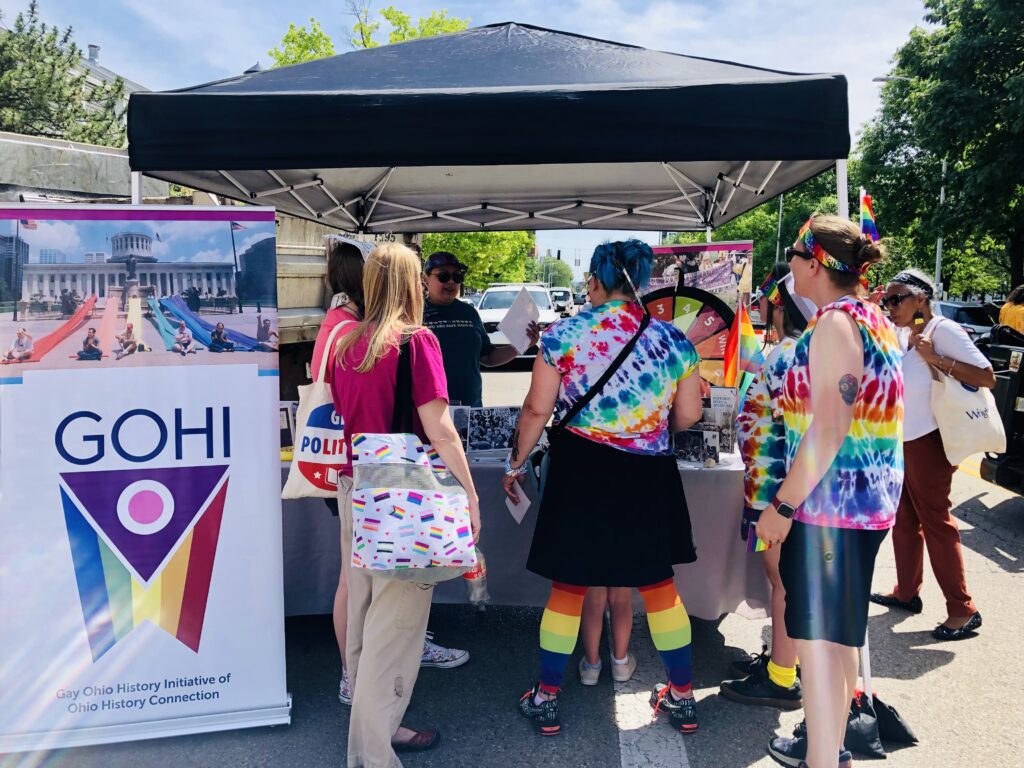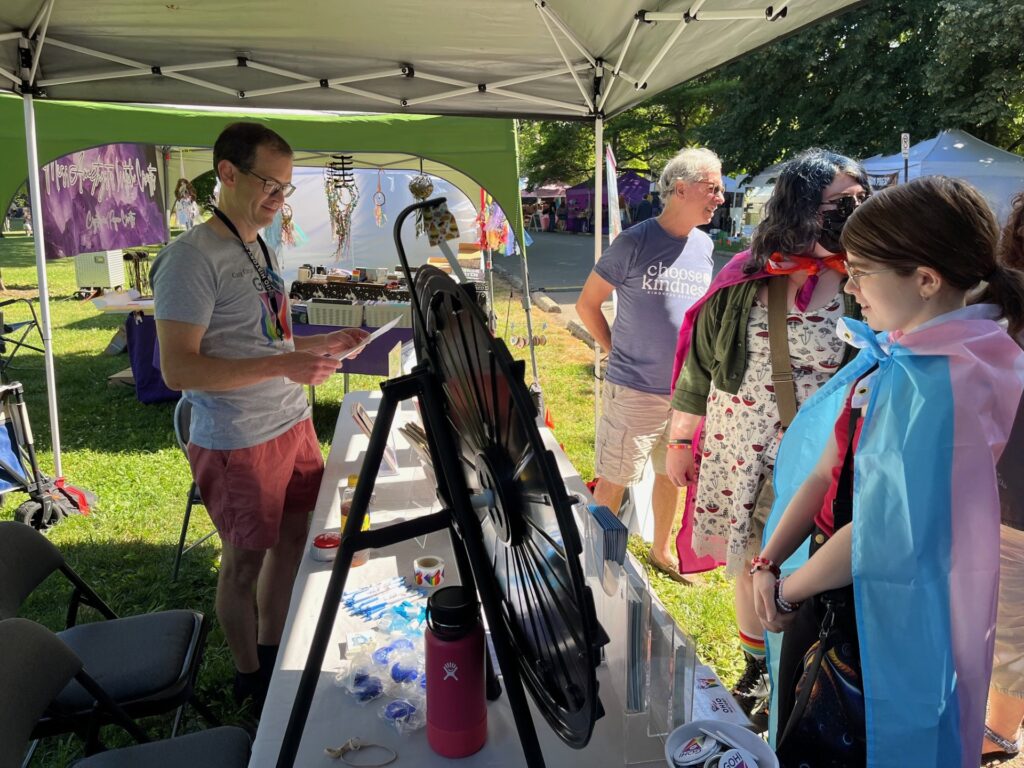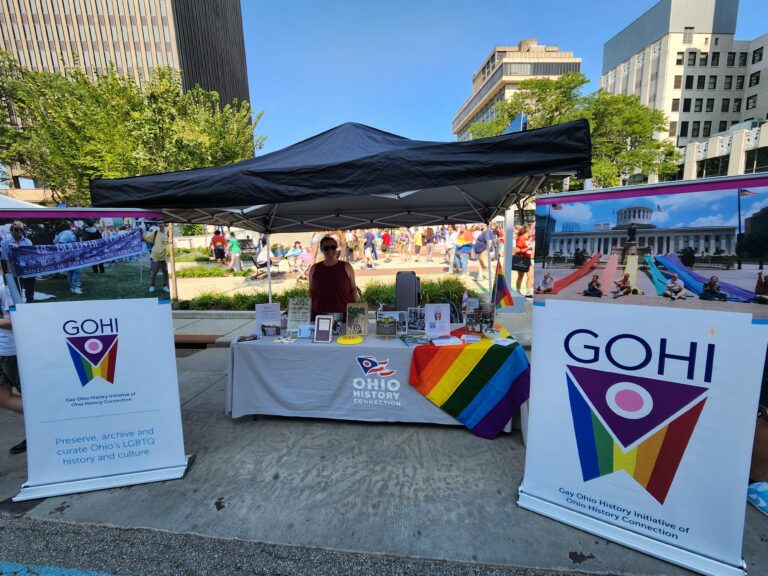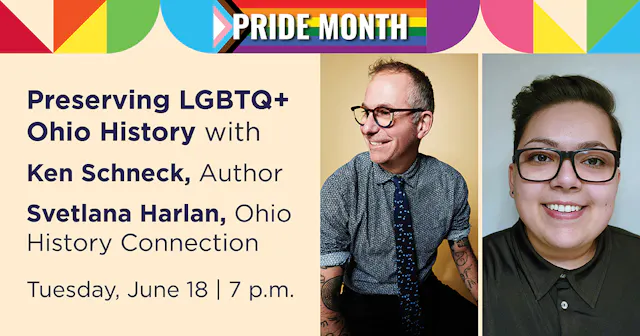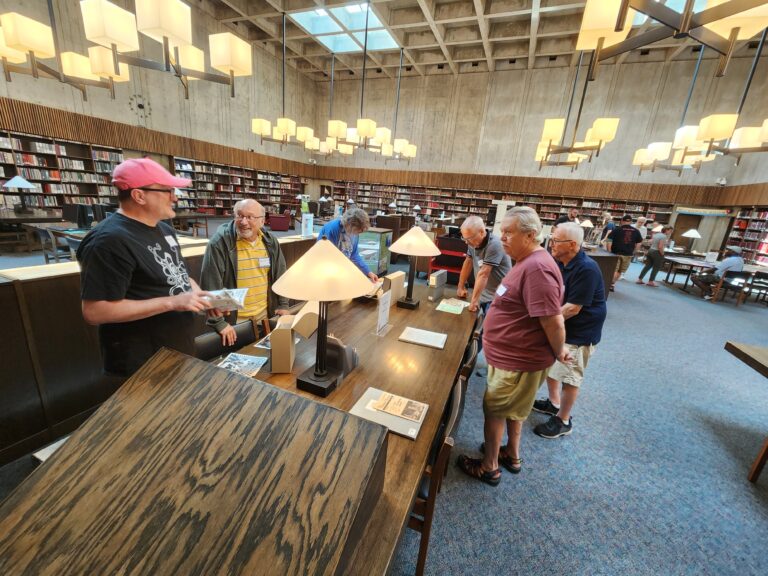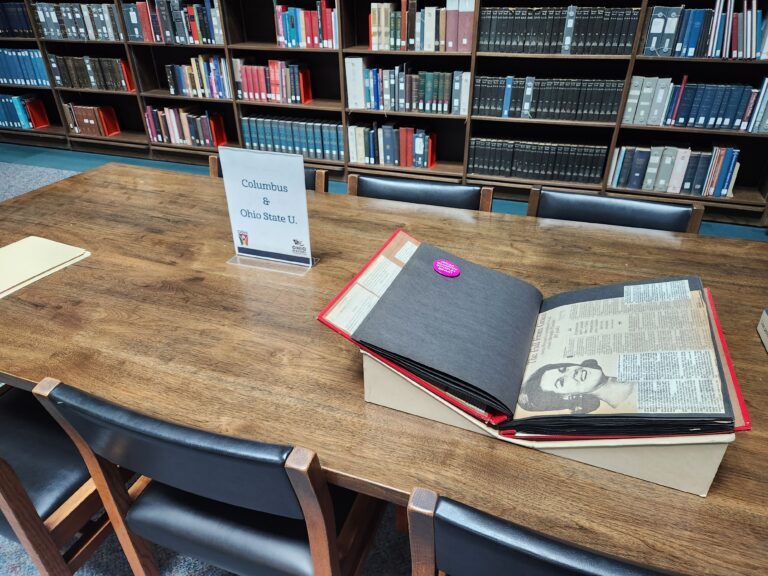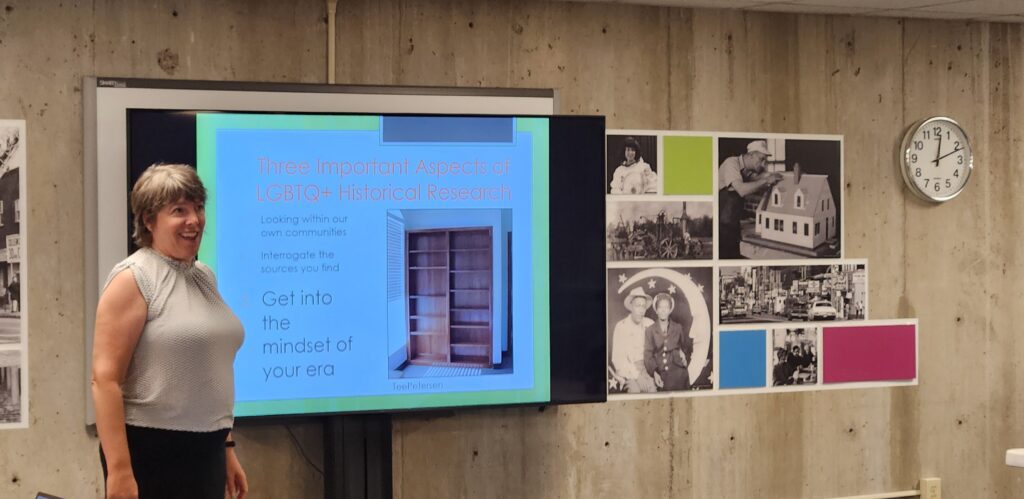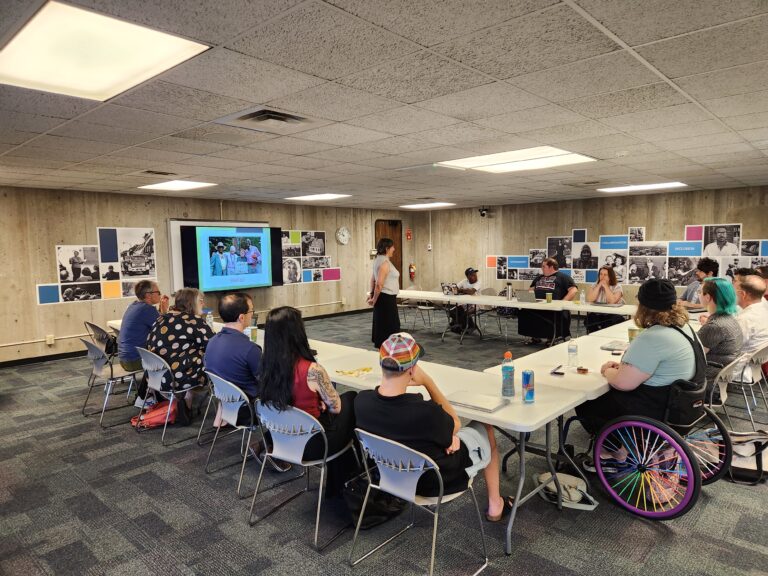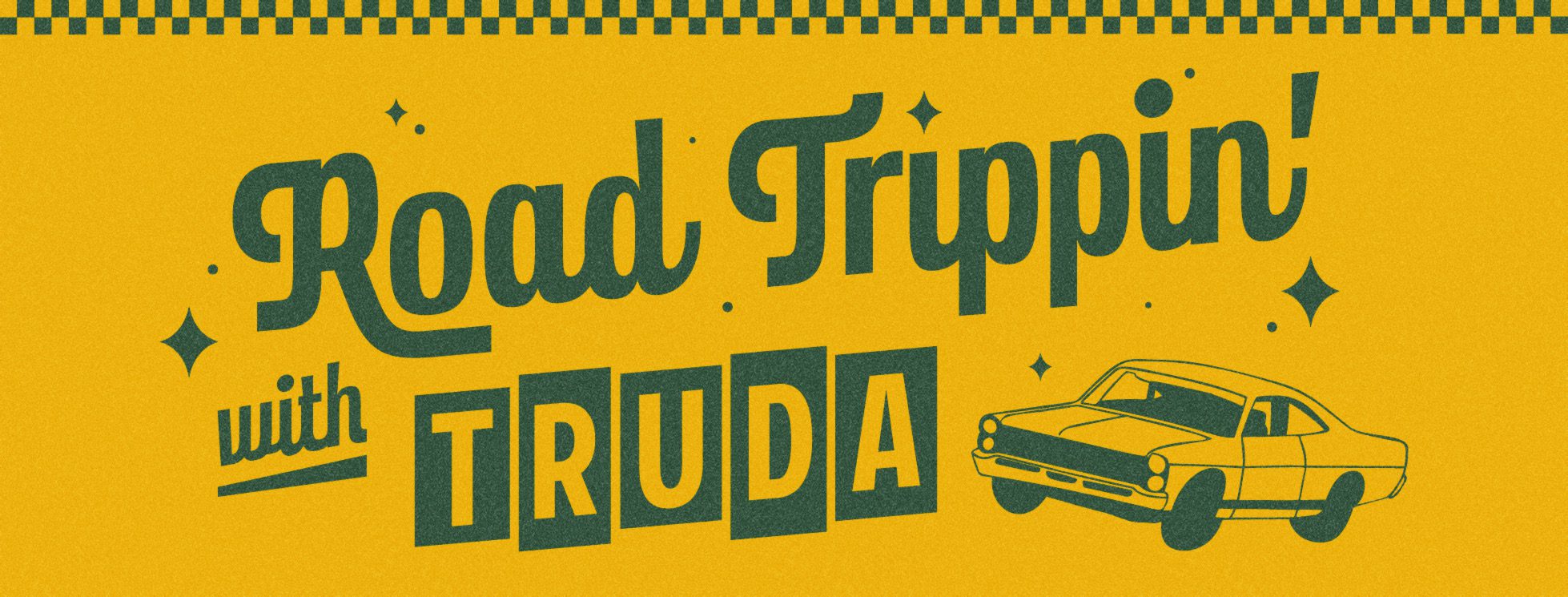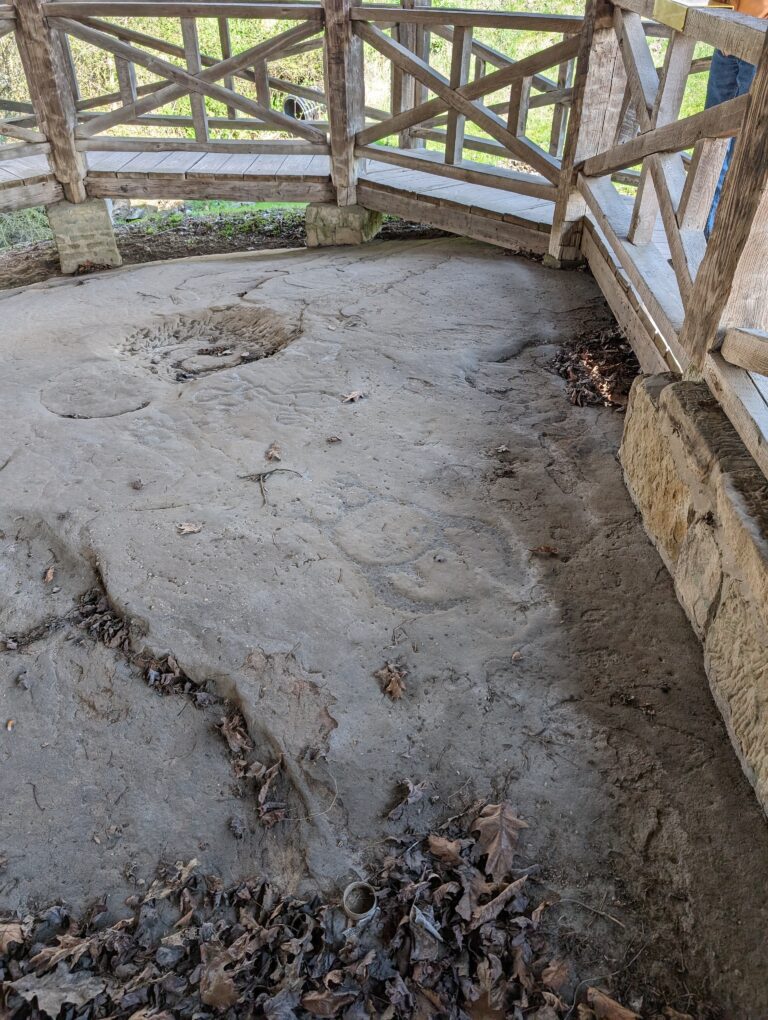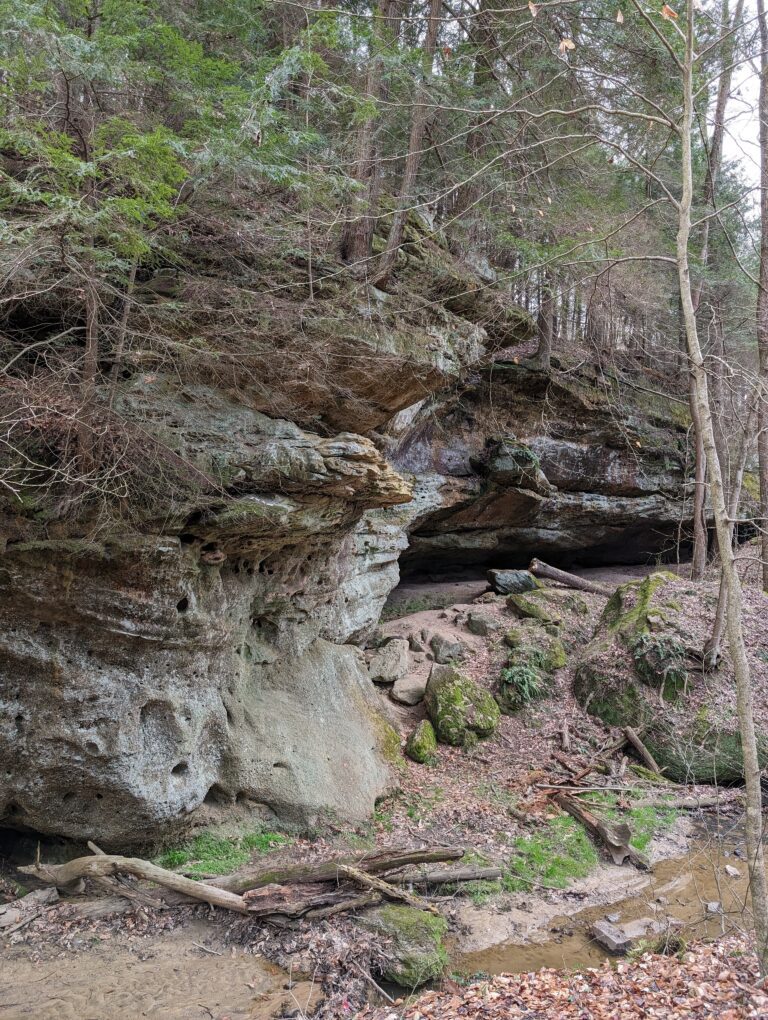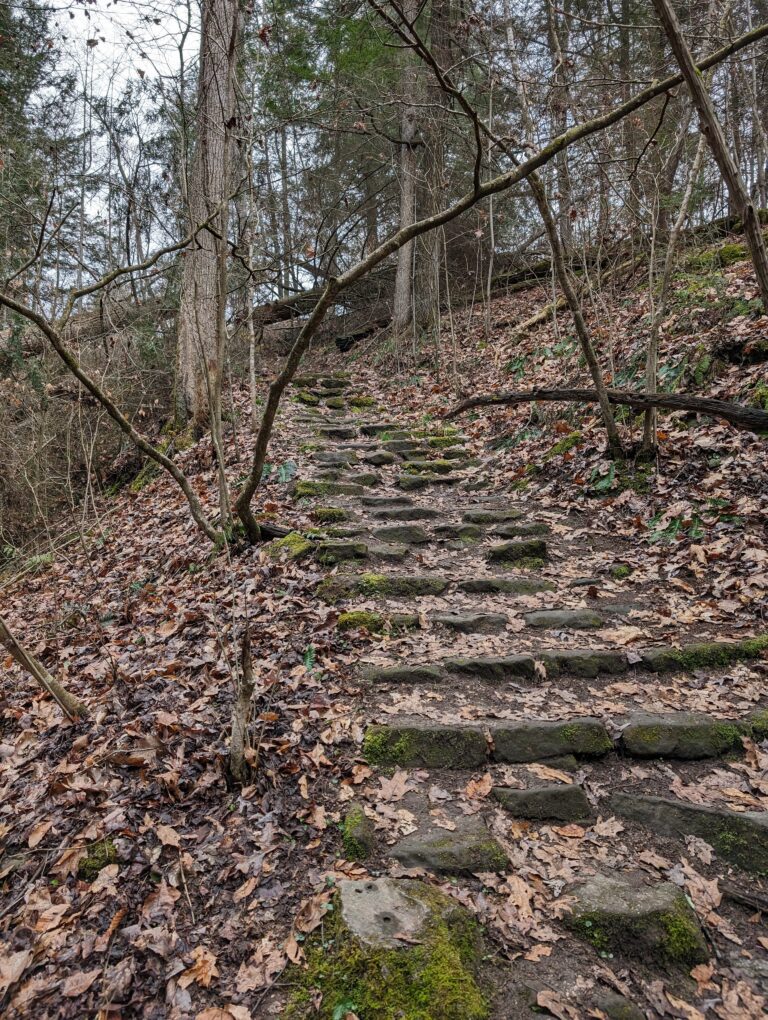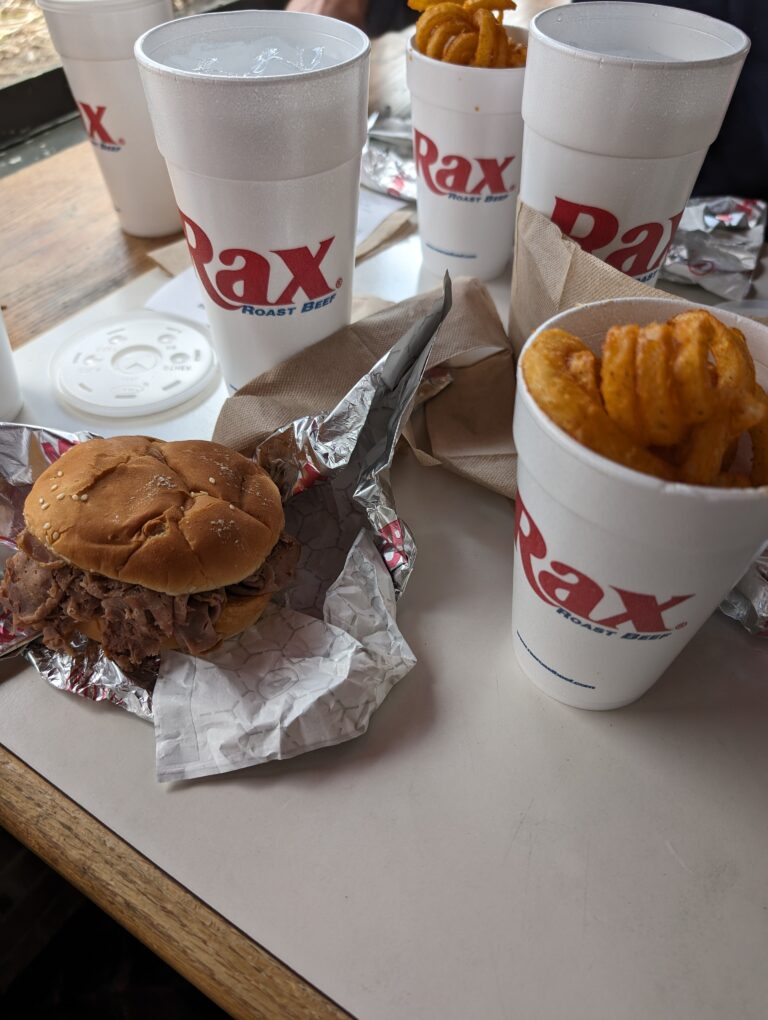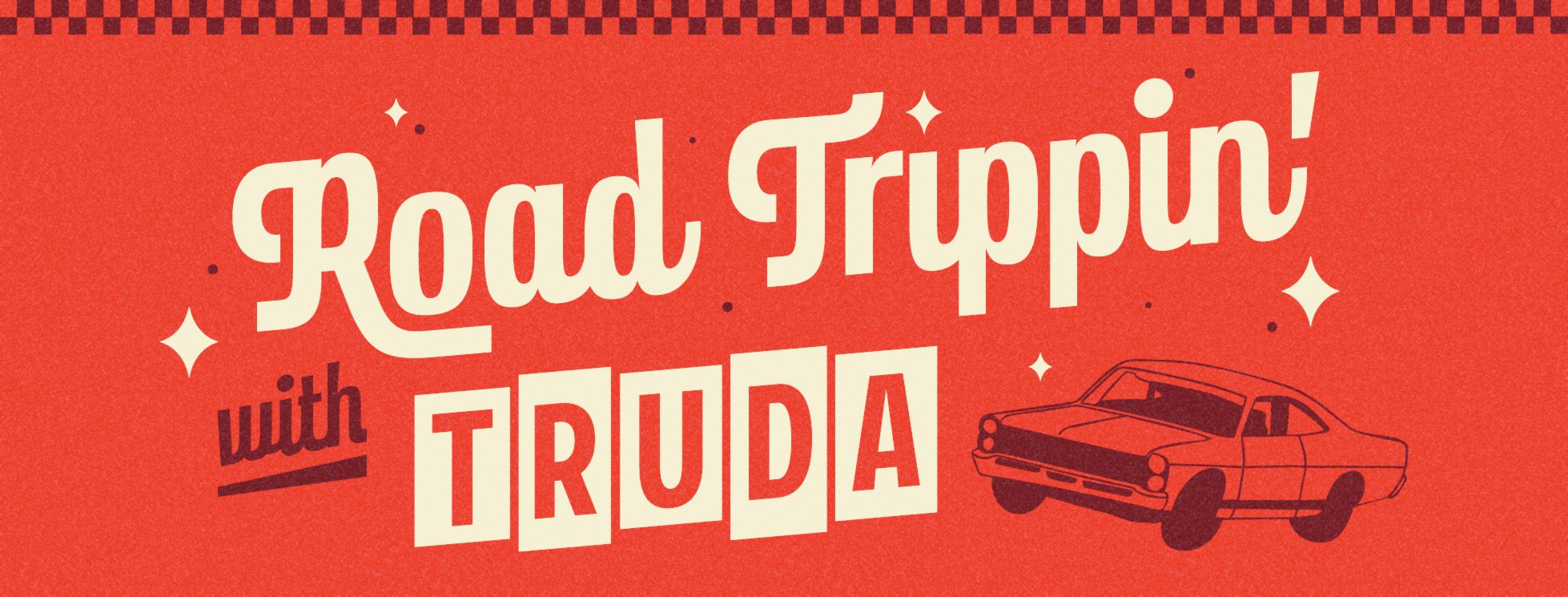
Join me as I visit the sites in the Ohio History Connection network! This month’s trip took me to Fort Recovery Museum and Monument in the Village of Fort Recovery.
Fort Recovery is the site of two important battles: The 1791 victory of nine Native Nations over General Arthur St. Clair’s forces (commonly referred to as “St. Clair’s Defeat”); and the 1794 victory of General Anthony Wayne’s army over a larger alliance of Native Nations.
The events at this battlefield were pivotal in the relationship between the Native people defending their homelands and invading American soldiers and settlers. The battles at this site set the stage for the 1795 Treaty of Greenville, after which Native Nations relinquished most of their land holdings in Ohio. They also set the course for the determination of land ownership in contemporary Ohio and the 1830 Indian Removal Act, forcibly removing American Indians from their homelands in Ohio.
Today, visitors can tour the excellent museum, follow a walking tour of the battlefield and see the monument that honors U.S. soldiers killed during the battles.
The museum consists of three floors. The first-floor features exhibits about the battles and their historical context. The second floor has some great interactive displays for kids and explores the precontact era of the area. The basement space includes a video, more kids’ activities and restrooms.
Maps of the walking tour are available both inside and outside the museum. The first stop is right outside the museum’s front door and leads visitors around a series of 15 wayside exhibits. I’m the first to admit that I’m directionally challenged, so I might have gotten lost had I been by myself on this trip. But luckily, my colleague Neil could have been an army scout in a past life. He happily led us through the walking tour, during which we saw a log cabin, the Fort Recovery Monument, the Pioneer Cemetery and much of the lovely Village of Fort Recovery. I would highly recommend the walking tour. However, if you aren’t up for a walk, the museum is well worth visiting on its own.

The Fort Recovery Museum includes three floors of exhibits.
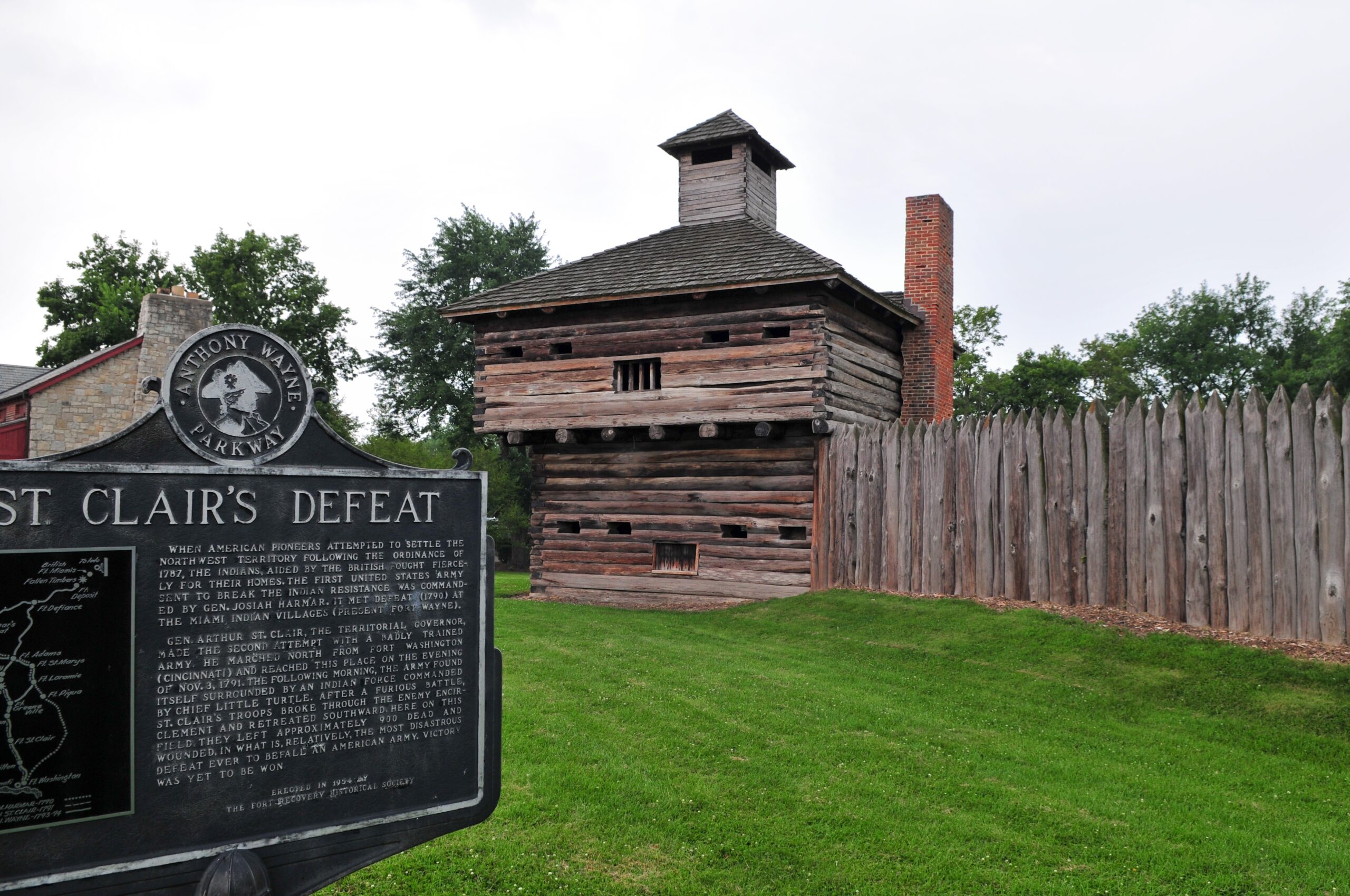
Be sure to explore the blockhouses, located right outside the museum.
Address: Fort Recovery is located at 1 Fort Site Street in Fort Recovery, OH.
How much time: I’d budget about 45-60 minutes to explore the museum and another 60-90 minutes to do the walking tour around the town of Fort Recovery.
Truda’s Tips: Fort Recovery Museum is cash or check-only. While you won’t need to pay for your admission since you have an Ohio History Connection membership, you’ll want to be sure to have some cash or your checkbook available to make purchases in the gift shop, which features books, toys and other souvenirs. There is an ATM next door.
Don’t forget to go in the blockhouses that are located right outside the museum.
Kid Friendly? For elementary school aged kids and up.: There are a lot of things at Fort Recovery that would appeal to kids. The grounds are perfect for running around. I know my kids would have had a ball running from sign to sign to learn about the history of the site. Inside the museum, the third floor has pump drills, a weaving activity and animal bones and deerskins that they can touch. Kids would also enjoy the blockhouses (open during normal hours) and reading the map during the walking tour.
Lunch: You know lunch is a very important part of any road trip for me! There are lots of picnic tables available in the park behind the Fort Recovery Museum, so bringing your lunch is a great option. There are also some cute restaurants in the Village of Fort Recovery. If you’re interested in eating in town, I would ask the museum staff for recommendations.
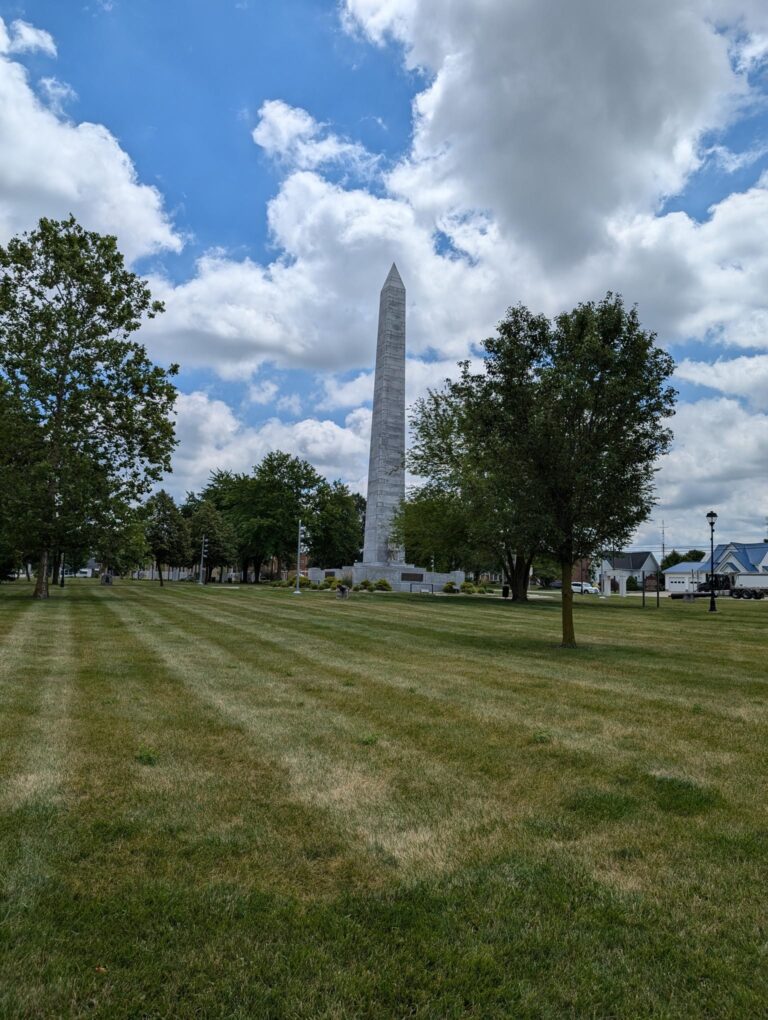
The monument that honors U.S. soldiers killed during the battles in Fort Recovery is just one of the many sites you’ll see on the walking tour of the village.
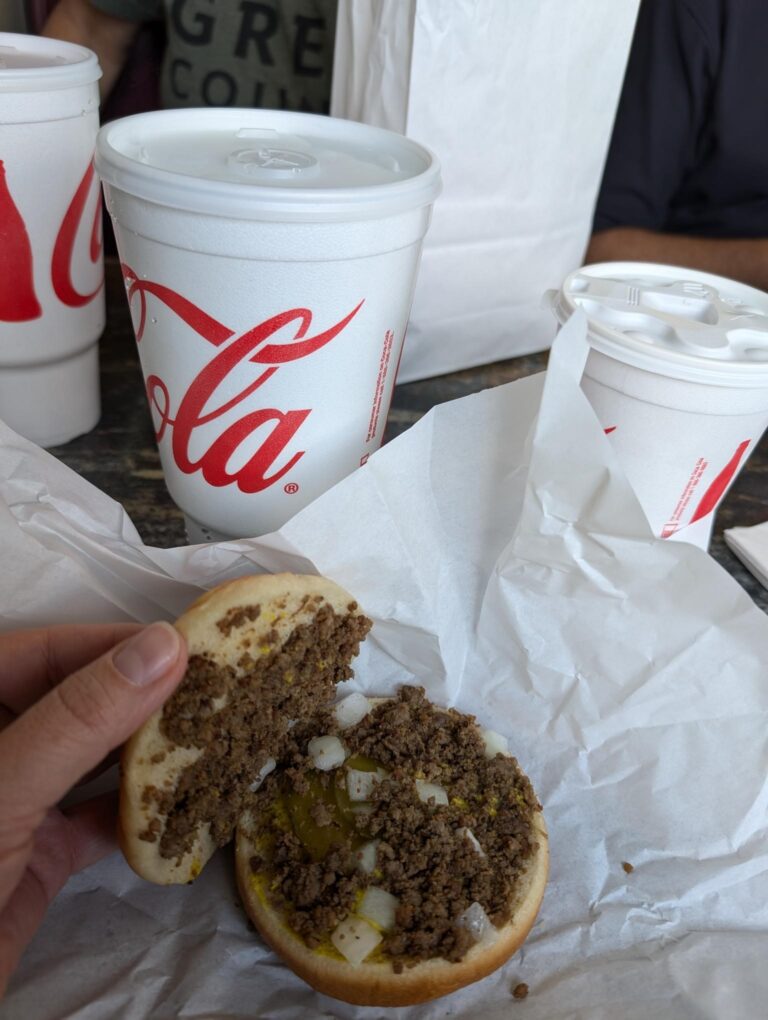
The famous Maid-Rite sandwich!
We opted to drive about 30 minutes south to Greenville to eat at the Maid-Rite Sandwich Shoppe. My brother-in-law had been telling me about Maid-Rite and their loose meat sandwiches for years, so I jumped at the chance to visit. I was not disappointed.
If you’re not familiar with the concept of a loose meat sandwich, think sloppy joe without the sauce. I ordered a Maid-Rite and a Cheese-Rite (which is just a Maid-Rite with cheese). The sandwich consists of browned ground beef, onions, pickles and mustard on a bun. I had expected it to be a little soggy or greasy, which it wasn’t at all. The toppings gave the sandwich a slightly sweet taste that I enjoyed. I would recommend that you order two to make a meal. I also ordered a chocolate milkshake, which was thick and delicious. Two of my coworkers ordered the same thing I did, and my colleague Emily had a strawberry shake, which she reported was yummy.
The restaurant itself has been a Greenville staple since 1934 and not much has changed about it. There’s indoor seating–both booths and counter seating–as well as a thriving drive-thru option. There’s plenty of parking on the north side of the building. Bathrooms are located in the auxiliary building next door. I would highly recommend a visit to Maid-Rite, both for the food and the historic atmosphere. Greenville residents clearly love their Maid-Rite and I think you will too.
For more information: To learn more about Fort Recovery, you can visit our website or the site’s website. Be sure to note the days and hours of operation. Fort Recovery is open through October and then will close for the season.
Want to make a day of it? Fort Recovery is located in Mercer County. Discover everything the area has to offer by visiting the Grand Lake Region website.
Ohio History Connection members enjoy free general admission to Fort Recovery and the rest of the historic sites and museums in our network. Visit ohiohistory.org/join for more details!
“Children should be seen but not heard,” goes the old adage. But what if we can help our students view their role in history differently? What if we taught students to view children not as mere background players in history, but as a key part of unlocking historical curiosity?
Though children’s voices are often underrepresented or absent from traditional history instruction, there is great value in helping our students recognize the role that kids like them have played in history. Including the child’s perspective on historical events offers students a unique way to engage with history and teaches them how to be good historians, while also fulfilling social studies, SEL, and ELA standards at all grade levels.
Unique Perspectives & Connections
There is a growing movement in history to recognize and analyze the experiences of children in history as a unique and important group, worthy of consideration in their own cultural, social and historical context. Historian Frijhoff Willem has been a key voice in this shift, arguing that children should not be viewed in history as simply miniature adults, but instead have always existed as a distinct group with specific needs and roles. Willem further argues that by examining historical representations of children in light of their social and cultural contexts, we are better able to appreciate and understand the important role children play and the unique perspective they provide in history. [1]
Focusing on children's artifacts, perspectives, and materials in the classroom allows us to create a more inclusive and comprehensive historical narrative. Students are not only able to able to identify and connect with the history they’re learning in significant ways, but they are also presented with the opportunity to consider how future generations will look back on their role in history. In order to facilitate this impactful learning opportunity in the classroom, teachers should give consideration to the politically, socially and culturally defined aspects of childhood in the time period they’re focused on. With that context in mind, teachers can help students recognize children's voices, agency and presence in history.
Take, for example, World War I. What were the experiences of children during the Great War? We can look to the actions of Girl Scouts across the country for an answer. Food conservation was a significant concern for Americans during World War I and was an issue of which children were well aware. In response, Girl Scouts throughout the United States planted and maintained Victory Gardens to help their communities. [2] The actions of these young ladies reflect the context in which they lived, while also demonstrating the agency and perspective of kids in World War I.
How can you bring this into the classroom?
Finding and comprehending children's voices can present teachers with a challenge, as the voices of kids have not always been recognized for their importance. Fortunately, museums and libraries have created spaces for children's histories, uncovering their material culture such as dresses, toys, songs, riddles, books, and even children's versions of the Holy Scriptures. Read on for a compiled list of example lesson plans, books, and other resources broken down by grade level standards to help you include children’s perspectives in the classroom.
Activities, Lessons & More for Bring Children's Voices into the Social Studies Classroom
Footnotes:
[1] Willem, Frijhoff. “Historians Discovery of Childhood,” Paedagogica Historica 48, no. 1, (Feburary 2012): 11-29. doi:10.1080/00309230.2011.644568
[2] “How Have Children Helped Their Communities by Caring for the Environment?” Library of Congress Blogs, Library of Congress, Jan. 5, 2024, https://blogs.loc.gov/families/2024/01/how-have-children-helped-their-communities-by-caring-for-the-environment/.
Blog image citation: Students and teacher at blackboard photograph. Photograph. Ca. 1906-1908. Ohio Memory, Albert Belmont Graham Collection. https://ohiomemory.org/digital/collection/p267401coll32/id/9630/rec/63 (Oct. 1, 2024).
